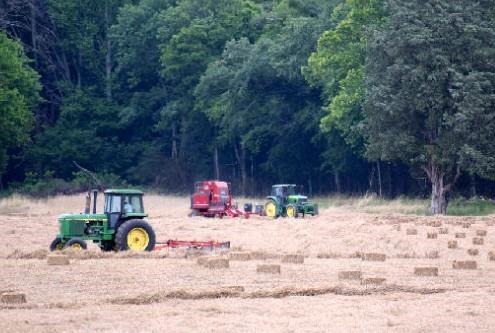By Pam Knox
The USDA has a website called Farmers.gov that I have not visited before. It has a lot of very useful information for farmers, including links to programs for disaster relief, crop insurance, and planning for natural disasters. This week’s blog post is a guide to drought programs that you might find useful the next time you are in a drought or are trying to plan for how to make your farm more resilient to extreme weather. Check it out and see what information is of most use to you.

A trio tractors rake, bale and collect straw at Scoggins Farm, a family farm on West Armuchee Road in South Walker County, Ga., on June 1, 2017. Plentiful rain so far this spring has fostered a far better growing season so far, local agriculture officials say. Photo by Ben Benton /Times Free Press.
Source : uga.edu